The Last Supper Question – Luke 22:7-8
The Last Supper Question
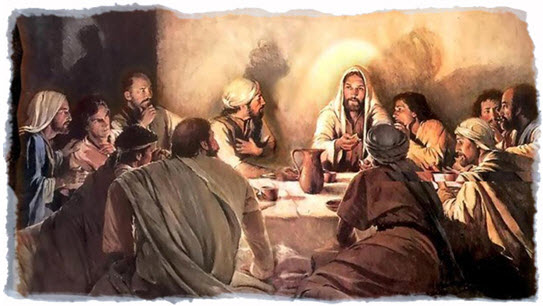 Luke 22:7-8
Luke 22:7-8
Discover in this short interlinear Greek word study upon which day the Last Supper actually took place according to Scripture, and why. Could the true Messiah celebrate the Passover and be the Passover Lamb on the very same day? Might there have been a conflict of calendars? Or, might the simple truth lie at the feet of a poor translation?
The Last Supper Question
All the modern translations render the Last Supper of Luke 22:7-8 as occurring on the actual 14th day from the New Moon and on the same day as the yearly Passover Feast. Yet, if this were true, then Yahusha could not have been the true Messiah, as the true Messiah was to fulfill the prophetic law by laying down His life on the appointed day of Passover.
Some even believe that Yahusha, the Messiah, kept a different calendar that had a one-day discrepancy to that of the whole nation of Yasharal (Israel) as they celebrated Passover the following day. But this is unlikely, as not a word is spoken in this regard. It seems that in AD 31, Yasharal was on task with the correct calendar. Yet, I believe the conflict occurs because of an inadequate translation, utterly missing the mark that Yahusha, the Messiah, could not both eat the Passover and be the Passover Lamb on the very same day.
Passover Ordained in Eden
It all began in the Garden of Eden, where Adam and Eve were warned by their Creator not to eat of the forbidden tree, for if they did, they would “surely die.” Following their sinful act of disobedience, Yahuah, in His compassion, illustrated through the death of the first lamb that, indeed, “the wages of sin are death.” In this way, they could discern and see that their sin caused the death 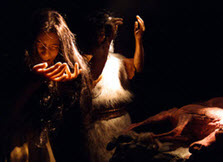 of not only themselves and all their offspring in the generations to come but of an innocent victim by their own hand.
of not only themselves and all their offspring in the generations to come but of an innocent victim by their own hand.
That first death by the hand of Adam must have had a horrifying impact on this pair, especially as they watched the life slowly leave the victim, all the while knowing its death was required because of their sin. Then, adding insult to injury, the skins of their murdered victim were placed upon them as a restorative covering. (Genesis 3:21) All of this was designed to teach humankind that sin destroys everything, including the sinner. The sinner is hopelessly lost and doomed to eternal separation from their Creator unless there is a substitute that steps in to take their place by giving its own life. So it is that only the Messiah, the true prophetic Passover Lamb, may clothe His real followers with robes of His righteousness that through their confession of sin upon Him, they may receive pardon, salvation’s restoration to the Father, and Eternal Life.
Since the fall in Eden and according to the storyline in Luke 22:7-8, the 14th of Abib was the synchronized date marked for Passover. The lambskins (Genesis 3:21) were fashioned and used to clothe Adam and Eve by their Creator as token robes of the promised Messiah’s righteousness to prefigure the sin-covering final antidote made possible by our Savior. For more on this subject, refer to the article, Passover’s Blood-Stained Trail of Promise.
This first Passover e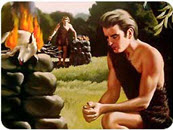 vent marked the first death, sacrifice, and qualifying promise of the Messiah, yet future, who would pay the price for sin by His own death. For it is stated that the tunics that were fashioned by Yahuah Alahim were made of skins. This is profound foundational evidence for our belief in the sacrificial ministry of the true Messiah.
vent marked the first death, sacrifice, and qualifying promise of the Messiah, yet future, who would pay the price for sin by His own death. For it is stated that the tunics that were fashioned by Yahuah Alahim were made of skins. This is profound foundational evidence for our belief in the sacrificial ministry of the true Messiah.
This same custom of sacrificing a Passover lamb was honored by Adam’s son Abel, who was himself slain by his jealous brother because Yahuah accepted Abel’s obedient sacrifice and not Cain’s.
“And in the process of time, it came to pass that Cain brought an offering of the fruit of the ground to Yahuah. Abel also brought of the firstborn of his flock and of their fat. And Yahuah respected Abel and his offering, but He did not respect Cain and his offering. And Cain was very angry, and his countenance fell. . . Now Cain talked with Abel his brother; and it came to pass, when they were in the field, that Cain rose up against Abel his brother and killed him.” Genesis 4:2-5, 8
Noah was no stranger to offering sacrifices to Yahuah and did so when he was able to walk again on dry land.
“Then Noah built an altar to Yahuah, and took of every clean animal and of every clean bird, and offered burnt offerings on the altar.” Genesis 8:20
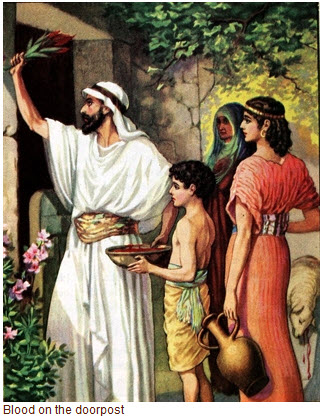 So it was that the true believers in the promised Messiah continued this custom of animal sacrifice that had begun in Eden under the guidance of Yahuah. These included Abraham, Isaac, and Jacob. At the time of Moses, this same lamb sacrifice of the 14th of Abib, with the sprinkling of blood on the doorposts, received the same significance for Yasharal (Israel) as it had for Adam and Eve, as they were spared the death sentence when Yahuah passed over (Passover) at midnight and only killed the firstborn of Egypt.
So it was that the true believers in the promised Messiah continued this custom of animal sacrifice that had begun in Eden under the guidance of Yahuah. These included Abraham, Isaac, and Jacob. At the time of Moses, this same lamb sacrifice of the 14th of Abib, with the sprinkling of blood on the doorposts, received the same significance for Yasharal (Israel) as it had for Adam and Eve, as they were spared the death sentence when Yahuah passed over (Passover) at midnight and only killed the firstborn of Egypt.
Following this event, the Sanctuary/Temple system was established that included the lunar appointed feast/sacrifice schedule overseen first by Aaron and the Levitical Priesthood (a symbol in types and shadows of our Messiah’s Melchizedek Priesthood) and continued through to the time of David, Isaiah, Jeremiah, until the Messiah, the LAMB of YAHUAH, paid the final price for sin.
From the first sacrifice in Eden to that epic and final Passover sacrifice in Yarushalom (Jerusalem) was four thousand years, to the very day. Synchronized by counting 14 days from the full New Moon, it marked the second step and not the end of the prophetic seven-phase ministry of the Messiah, divided into three basic functions in their order: 1) As the Lamb sacrifices for sin; 2) As the High Priest according to the order of Melchizedek, our intercessor in the shamayim (heavenly) restoration system; 3) And as our King and deliverer at His RETURN.
This yearly Passover feast day will continue to be celebrated by Yahusha’s obedient followers until the second coming of the Messiah with bread and wine, with neither a lamb nor grape juice, as some teach. With regard to the grape juice– because Passover was a spring event, and the grape harvest occurred in the fall, all the grape juice had already turned to wine. These ancient folks had no way to preserve grape juice for eight months without it fermenting. Also, all who continue to follow the Levitical system of sacrificing the symbolic lambs for Passover are actually declaring that their Messiah has not yet come, just as the Jews continue to do to this day. All the symbolic lambs reached their fulfillment in our Messiah’s crucifixion and resurrection. Never would the symbolic lambs need to be utilized again other than in their metaphoric conceptual symbolism that pointed to the marvelous and sacred payment for our sins by the authentic Messiah. Today, Passover is the celebration of what He has already done for you and me so that we may have HOPE beyond the grave.
Was the Messiah Utilizing a Different Calendar than the Jews?
Some have suggested that the reason Yahusha the Messiah celebrated Passover a day early was because that was actually the night of the true Passover and that the nation of Yasharal (Israel) was, in reality, off by a day when celebrating it the next day. But let’s examine the evidence to see if this view has merit.
“On the fourteenth day of this lunar month, between (H#996) the evenings (H#6153 – evenings plural), you shall keep it at its appointed time. According to all its rites and ceremonies, you shall keep it.” Numbers 9:3
The fourteenth, counted from the full New Moon of Abib, was the appointed time since the beginning. This could only be rightly fulfilled by the death of the Messiah on the self-same day.
“And He [Messiah] said, “Go into the city to a certain man, and say to him, ‘The Teacher says, “My time is at hand; I will keep the Passover at your house with My disciples.”‘” Matthew 26:18
The statement of the Messiah declaring, “My time is at 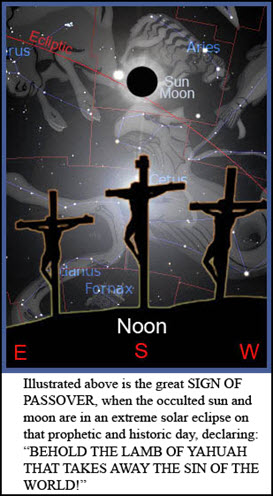 hand,” was His announcement of type meeting anti-type in this momentous and epic Passover fulfillment that had been celebrated as the GREAT PROMISE through types and shadows for 4,000 years.
hand,” was His announcement of type meeting anti-type in this momentous and epic Passover fulfillment that had been celebrated as the GREAT PROMISE through types and shadows for 4,000 years.
On the fourteenth day from the sixth to the ninth hour (Noon – 3:00 PM), the sun was darkened.
“Now it was about the sixth hour, and there was darkness over all the earth until the ninth hour.
Thenthe sun was darkened, and the veil of the temple was torn in two.” Luke 23:44, 45
Notice that the sixth hour quantifies that the counting of time marked on a sundial began at sunrise with the sun ruling the day, just as it was recorded in Genesis 1:16.
The Solar Eclipse on that 14th Day
While three of the Renewed Covenant (New Testament) authors record this same event, it is only Luke who identifies that the darkness is caused by the sun being darkened. This was a classic case of a solar eclipse. Every time in the previous history when the sun was darkened, it had always been because the dark conjunction moon came squarely between the earth and the sun. This event was no different except in the length of the eclipse, and the degree of darkness was, no doubt, miraculously enhanced to emphasize the paramount importance of that day. And let it not be lost on the reader that it is impossible to have a solar eclipse on the 13th day of the lunar month for the sheer fact that a solar eclipse occurs only at the mid-month point. A solar eclipse can only occur on the 14th day of a 29-day month or the 15th of a 30-day month. There is no such thing as a 26 or 27-day lunar month.
The modern translations insert the word “then” to cause it to appear that the sun being darkened was not the cause of the darkness that was over all the land, but rather, the darkness was miraculous, which then caused the sun to not shine. This tricky wordplay fuels the modern Rabbinical or Karaite notion that at the time of this Passover, either the dark or crescent was the correct New Moon, with the full moon occurring mid-month. Since neither of these views can provide a solar eclipse mid-month, it hides the fact that they have altered our Creator’s original calendar system. According to reliable evidence, this was not dark clouds or a plague of blackness, as some Messianics use to support their traditional Jewish views that the crescent moon is the new moon. Yet, the witnesses of the Scriptures and history tell a very different story, that the full moon was the original New Moon, for indeed, a solar eclipse occurred at the appointed time of our promised Messiah’s Passover.
Just as ancient Yasharal (Israel) kept seeking after the gods of clay and stone of the surrounding nations, it appears that under strong persuasion and persecution of their Roman conquerors, they finally succumbed to adopting the Babylonian dark and crescent moon calendar system within 300 years following the Passover crucifixion of the Messiah. How it happened has not been recorded in great detail, but that it happened is self-evident. Refer to the article The Sun was Darkened from the Sixth to the Ninth Hour.
Translation Error
Moreover, there was even yet to go one day for the Passover and the Feast of Unleavened Bread, the fixed Time, when it was necessary to kill the paschal lamb. Luke 22:7
Verse 7 begins by identifying, “There is yet one day to go before the day of Passover and Feast of Unleavened Bread.” In other words, this is telling us that today is the 13th, making the next day the 14th of the lunar month of Abib as counted from the full New Moon, the authentic and sacred set-apart day of the yearly Feast of Passover (Leviticus 23:5). The word choices, “there was even yet to go one day” identifies that indeed this was the day before the 14th, the day before the real Passover date. Context is everything, and when the requirements of context are not met, it is clear something is wrong. In this case, it is the translation.
But even so, He sent Peter and John saying, go and make ready for us, the Passover sacrifice in order that we may eat it. Luke 22:8
Verse 8 tells us that in spite of the fact that this was one day earlier. The Messiah sent Peter and John to go and prepare the Passover sacrifice on this day, the day of the 13th, as counted from the full New Moon, so they may eat it together. It is the word “but” that makes the difference and harmonizes the storyline. Therefore, the significance of this is that if they did not eat it this day, the day before Passover, they would not be able to eat it together at all, and the opportunity for the grand lessons provided by the Messiah would be lost. No doubt, this raised questions in the minds of the disciples, as it was unheard of to celebrate a set-apart Feast Day on a day other than the feast itself unless they were unclean and must postpone for the second month. But in their complete trust in their Master, they complied and did as they were asked.
Was There a Lamb Sacrifice to be Eaten?
In all of the Gospel narratives of this Last Supper event, the Messiah gave NO instruction for continuing to sacrifice a lamb and eat it as part of the Passover event. Also, just because timing required that He and His disciples eat the Passover a day early, He in no way was changing the date to celebrate His death till He comes (returns). The pattern and template had been well established since the time of Eden and then later dictated in the Torah Law at the time of Moses. In both the Messiah’s life and death, His aim and desire were to fulfill His destiny accurately, according to both TIME & EVENT.
There is no reason to believe that they did not prepare the required lamb in addition to the bread, wine, and bitter herbs, as Verse 8 attests on that 13th day. But this was to be the last Passover lamb they would ever eat, as the typology met its fulfillment, and there was no need for lambs to be sacrificed ever again, as the Messiah was the only Lamb that takes away the sins of the world. At His crucifixion, the Priesthood also changed from the symbolic Levitical Priesthood with its types and shadows to that of the original, the Messiah’s Melchizedek Priesthood. So, while the earthly priesthood came to its end, the Messiah’s Priesthood just began in real-time. And not by any coincidence, it continued to utilize the entire lunar appointed time calendar model set forth at creation. For it was preordained to be the GOLD STANDARD OF AUTHENTICITY and the final test of faithfulness among His obedient followers. It was to be the calendar model to be cherished by His obedient followers during the course of history on earth, but also throughout all eternity. Why? Because it was designed to synchronize all the obedient of our Creator, Yahuah Alahim, to His unique and Kadosh worship rhythm. Only the saved of the earth will keep the lunar appointed Feast days because these are the very celebratory symbols of what their sins cost the Messiah, and at the same time, recount all that the Eternal Father and Son duo has done to restore them back to His perfect creation.
The Last Useful Lessons
Our Messiah had a plan to use this particular meal, a day early, as an opportunity to instruct His disciples this one last time. In this way, He was able to illustrate, in real-time, the night before His crucifixion, the depth and expansiveness of the meaning of the promised Passover lamb sacrifice since Eden. He then also explained the symbols of the bread representing His body broken for us, and how the wine is His blood to be spilled for the sins of the entire world.
In our Savior’s foreknowledge, it is clear that He knew He would not be able to eat the paschal sacrifice meal the following day, on the actual appointed 14th day of Passover, as this was to be the day that type would meet anti-type. For Him, tomorrow was the appointed day, the long-time designated day upon which He was to lay down His life for humanity (John 15:13). It was to be the day that He fulfilled the prophetic Passover promise first given to our first parents, and celebrated in private dwellings for 4,000 years. Even the entire sacrificial ceremonies that had so publicly been displayed in the Sanctuary/Temple services for the 1500 years between the time of Moses and the Messiah had their roots in Passover and its mechanism for restoring mankind back to the Father (Leviticus 23:5). He was, after all, the promised Lamb of Yahuah that was slain for the sins of the whole world (John 1:29). But the tomb couldn’t hold Him, for He arose after three days and nights and is ALIVE!!! HalleluYah!!!
Conclusion
It appears that the truth on this subject lies squarely at the feet of an inadequate translation. Further, evidence of the solar eclipse on the 14th synchronizes the prophetic appointed time from Eden, Abraham, and the Exodus to the Passover crucifixion of the long-promised Messiah.
So it is that Yahusha the Messiah celebrated the last supper on the 13th with His disciples in a unique and private ceremony, a full twenty-four hours previous to the traditional Levitical Feast of Passover, as kept by the entire Hebrew nation. Not because the Hebrews were keeping it on the wrong day but because it afforded the Messiah an opportunity to provide divine lessons to His disciples. This is because He could not have been both eating (the sacrifice?) and being the appointed prophetic sacrifice fulfillment at the same time on the 14th. He planned and asked His disciples to prepare an early paschal meal just for them, acknowledging that, indeed, “there was one day to go before Passover.” So He appointed Peter and John to make ready the meal. They then proceeded to celebrate it the night of the 13th.
From the evidence, it appears our Savior utilized this time to teach precious lessons relating to Himself as the true Lamb and to give them confidence for the future by stating that He would not drink of the cup hereafter until they met again in the New Jerusalem (Mark 14:23), referring to the Marriage Supper of the Lamb (Revelation 19:9). It became His Promise of an eternal future, and its continued celebration, the tie between the Savior and the saved FOREVER!!!!!
Honored are those who are called to the marriage supper of the Lamb!’ Revelation 19:9
For more on the pragmatic value of Passover, refer to the article, Why All the Wars in the Holy Land?
